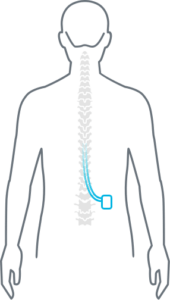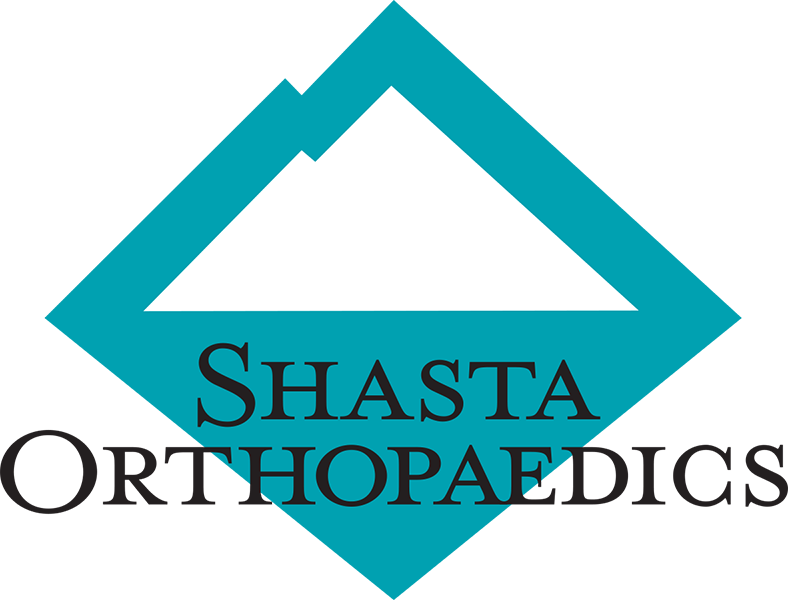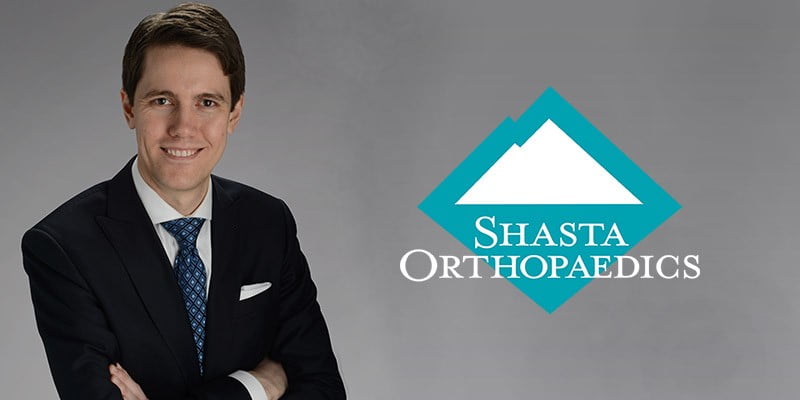Spinal Cord Stimulation For Chronic Pain
Failed Back Surgery Syndrome
Hundreds of thousands of Americans every year undergo back surgery. 20-40% of them will continue to have pain afterward, or have a recurrence of pain later. This condition is called Failed Back Surgery Syndrome. In many cases the surgery did exactly what it was supposed to do: prevented further damage to the spinal cord and spinal nerves from compression by discs or bone spurs. For ongoing pain though, more back surgery is often not a solution. Spinal cord stimulation is an expanding field that has made incredible advances in the last 10 years, and is able to offer relief to the majority of patients with Failed Back Surgery Syndrome. If you are one of them, even if you’ve trialed a spinal cord stimulator in the past without success, Dr. Monroe at Shasta Orthopaedics is here to help.

Typical placement of a spinal cord stimulator device
What is a Spinal Cord Stimulator?
A spinal cord stimulator is an implanted device that uses electrical signals to block pain transmission, like a pacemaker for the spine. Spinal cord stimulation was first used in 1967. Devices advanced in variety, size, and battery life, but they all produced a paresthesia (tingling/buzzing sensation) in the area of pain, and aimed to outcompete the pain signals. These devices worked well for certain types of pain, but overall outcomes were about “50/50” – they produced 50% or more pain relief in about 50% of patients. Then, in the mid 2010s, advances in different waveforms (patterns of electrical stimulation) for spinal cord stimulation began to appear on the market. An explosion of competition among stimulator companies has produced a wide variety of options. Many of the currently available stimulator technologies are capable of multiple different types of nerve stimulation and boast clinical trials showing a 70-80% success rate. In my practice, I am seeing success rates over 90%.
Who is a Candidate?
If you have chronic moderate to severe pain, you may be a candidate for spinal cord stimulation. Spinal cord stimulators are most successful for neuropathic pain – pain that is caused by damaged or trapped nerves. It is not a miracle cure for all types of pain, but there are often other treatments that will help in that case. Sometimes it is difficult to pin down the specific cause of pain, or there may be multiple. That is why the first step is a one week trial.
Trial and Implant Procedures
The trial period is a big advantage of spinal cord stimulation over other types of surgeries, allowing you to “test-drive” the therapy. Temporary stimulator wires are placed during an outpatient, x-ray guided procedure similar to getting an epidural injection. During the following week, you work with the device representative to trial various methods and locations of stimulation, to ensure that it will produce satisfactory results. A trial is considered successful if it produces over 50% pain relief, and improves ability to do everyday activities. Implantation of the spinal cord stimulator battery and wires is a minor surgery with no hospital stay. There are 2 small incisions and there is minimal postoperative pain.
Get Help Now for Your Chronic Pain
Spinal cord stimulators are proven in clinical trials to reduce pain, increase quality of life and ability to participate in activities, and reduce reliance on medications such as opioids. One of the most frequent things I hear from my patients is “I wish I’d known about this sooner!” If you have friends or family dealing with chronic pain, please share this article. If you are interested in finding out whether spinal cord stimulation could help you, call Shasta Orthopaedics or complete the form below to request an appointment with Dr. Forrest Monroe.


